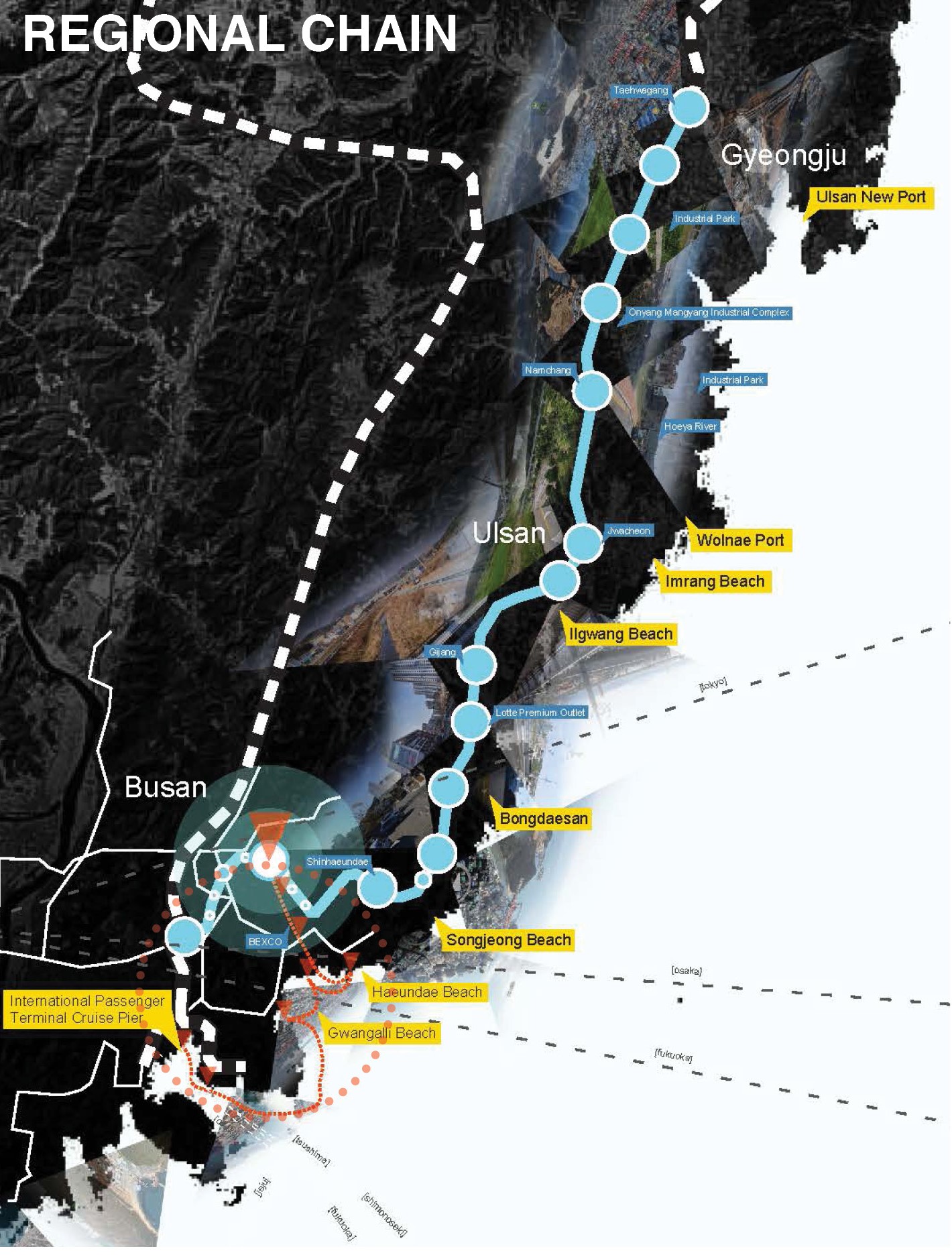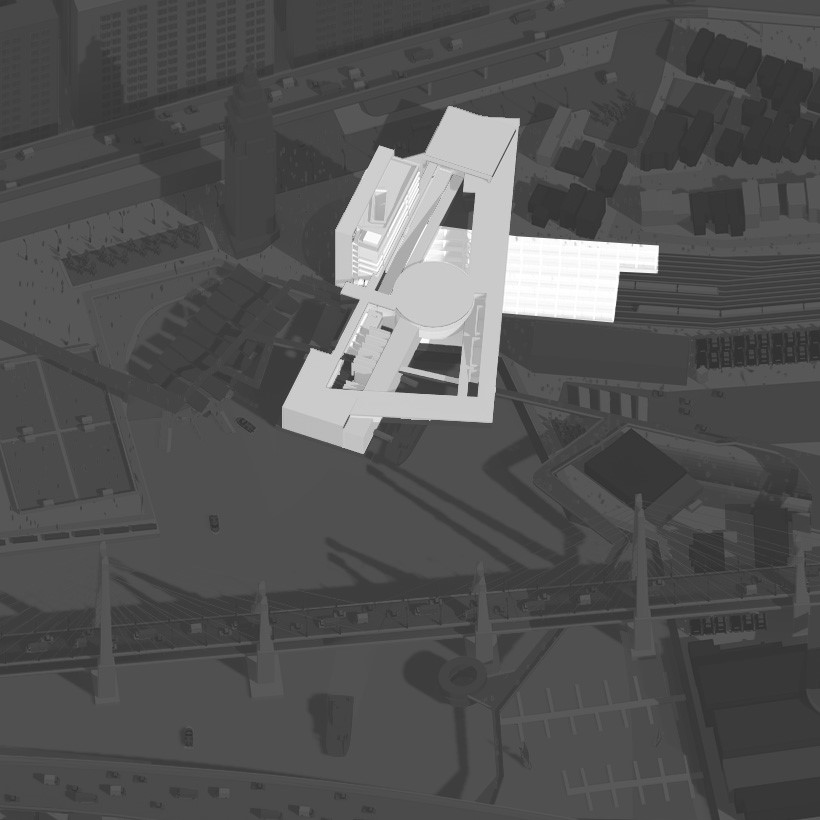Connective Corridor
Linking the Edge of A Gateway Megacity
Connective Corridor Linking the Edge of A Gateway Megacity



Date Summer 2022
Location Busan, South Korea
Collaborator Chenhao Luo, Zhi Zheng
Award Grand Prize / 2022 Busan International Architecture Design Workshop
Exhibition 2022 Busan Architecture Festival
video
Busan is the southern port city of South Korea. Given an interest in renewing infrastructure and strengthening the city’s signficance regionally and internationally, an updated framework needs to emerge, building on the city’s heritage and leveraging its character. To that end, this proposal looks to the Dongnae Line, historically linking three coastal provinces (Busan, Ulsan, and Gyeongju) and is arguably underutilized in recent years. Both ends of the train line links up with wider transport networks that connect to international destinations. We identified Wondong Station as an ideal ‘gateway’ given its position at the city’s periphery and being situated above Suyeong River, which flows out into the bay. There is also a missing direct link between the edge and the cores of Busan, and a new ferry line that begins at Wondong Station and ending at the international port would not only create a closed loop that facilates the wholeness of the city’s new framework, but also strengthen the connective corridor’s capacity of traversing by land, sea, and air at the regional scale, city scale, and community scale.

Coastal linkage via Dongnae Line

Major Cities Scale Comparison
The connective corridor’s framework uses the Dongnae Line as its first arc, with Wondong Station and Busan Station acting as gateway nodes that allow for transfers to other transport systems. The land portion combines 3 other local train lines as well as dense walkable commercial districts. At both stations are terminal piers for the proposed Suyeong Ferry Line, which stops at coastal hot spots like beaches or convention centers. The Suyeong River will also be developed into a green passageway that creates community linkages along the city’s northwestern edge, which currently is segregated due to topography and insufficient infrastructure.
![]()

3 Arcs of Linking Busan’s Periphery Infrastructure


Proposed Design for Busan Port International Passenger Terminal
The elevated expressways flanking the Suyeong River and the gateway station of Busan Wondong become a design opportunity that pragmatically and symbolically signals the activation of Busan’s metropolitan periphery. The transformation of the waterfront becomes an instigator that triggers a series of complementary design proposals, all compounding on each other in forming robust and diverse networks for local communities. Instead of an impenetrable wall that blocks off the waterfront, the expressways that flank Wondong Station are transformed into porous membranes that invite people to come together. The riverbanks are activated by extending the existing landscaping upstream from the existing portions near the bay, thereby creating a resilient green corridor that doubles as recreational third spaces for locals. These individual zones are woven together via an elevated viaduct, bridging micro-communities and supporting the neighborhood’s evolution by providing spaces for civic communing to take place.
An analysis of usage and demographics of the surrounding neighborhoods near Wondong Station highlighted the need for civic, cultural, and recreational programs for the local community. As such, we are proposing to activate the riverbanks by extending the existing landscaping upstream from the existing portions near the bay, thereby creating a resilient green corridor that doubles as recreational third spaces for locals.
An analysis of usage and demographics of the surrounding neighborhoods near Wondong Station highlighted the need for civic, cultural, and recreational programs for the local community. As such, we are proposing to activate the riverbanks by extending the existing landscaping upstream from the existing portions near the bay, thereby creating a resilient green corridor that doubles as recreational third spaces for locals.





Dongrae-Gu Analysis
< slide >

Elevated Promenade and Waterfront Proposal for Busan Wondong Station
Given that the refurbishment of waterfronts is often correlated to the maturity of a city, the elevated expressways flanking the river and station become a design opportunity that pragmatically and symbolically signals the activation of Busan’s metropolitan periphery. Additionally, we are also looking at utilizing existing urban voids as areas of intervention for small pavilions or landscapes that connect the residential, commercial, and recreational areas. These individual zones (residential complexes, the waterfront, the urban voids) are then woven together via an elevated viaduct that extends out from the station, bridging micro-communities and supporting the neighborhood’s evolution by providing spaces for civic communing to take place.
Pockets of third spaces begin to take shape, becoming familiar and routine places that people gravitate towards – the water that is so vital to the identity of Busan becomes the hearth of the community. Smart infrastructure is modernized and optimized to anticipate and meet the needs of climate resiliency, energy, and an expanding network of flows.






Waterfront Revival Options
© 2023 Tsz Man Nicholas Chung / all rights reserved

